Is there really a fish the size of a grizzly bear in California? Do they really swallow sharks whole? Many divers know of the Giant Sea Bass but what do we really know about them? And what do we have yet to learn?
An encounter with a fish that can grow beyond 550 pounds at 7 feet long can be quite an intimidating experience. Even though they are capable of swallowing small sharks whole, the giant sea bass is completely harmless and this rare, charismatic fish is not spooked by people. In fact, this curious fish is known to follow divers around and check them out!

Photo by Merry Passage
These slow growing giants reach up to at least 75 years old, and as an apex predator, they likely play a critical role in ecosystem health through maintaining balance in kelp forests and rocky reefs. Unfortunately, due to immense fishing pressure, they have suffered a severe decline in numbers – from 1932 – 1980, there was a 95% decline in commercial landings of Giant Sea Bass. With the species facing local extinction, a law was passed in 1982 prohibiting recreational and commercial fishing of the giant sea bass in California. The species currently is listed as critically endangered, just like the black rhino; a study back in 2015 estimated the total breeding population to be a measly 500 individuals in California waters.
Gratefully, recent research suggests that giant sea bass populations are recovering; however, to quantify how big the recovery has been, more data is needed. Despite their celebrity status, there are few studies on the species’ biology. Remarkably, researchers at UC Santa Barbara realized that the spot patterns on each individual are unique, and do not change over the course of its lifespan. Consequently, the Spotting Giant Sea Bass project was created to obtain photos from the dive community of giant sea bass to identify individuals through their spot pattern with machine learning algorithms. With this new data, researchers hope to improve our understanding of this charismatic giant to improve its conservation.
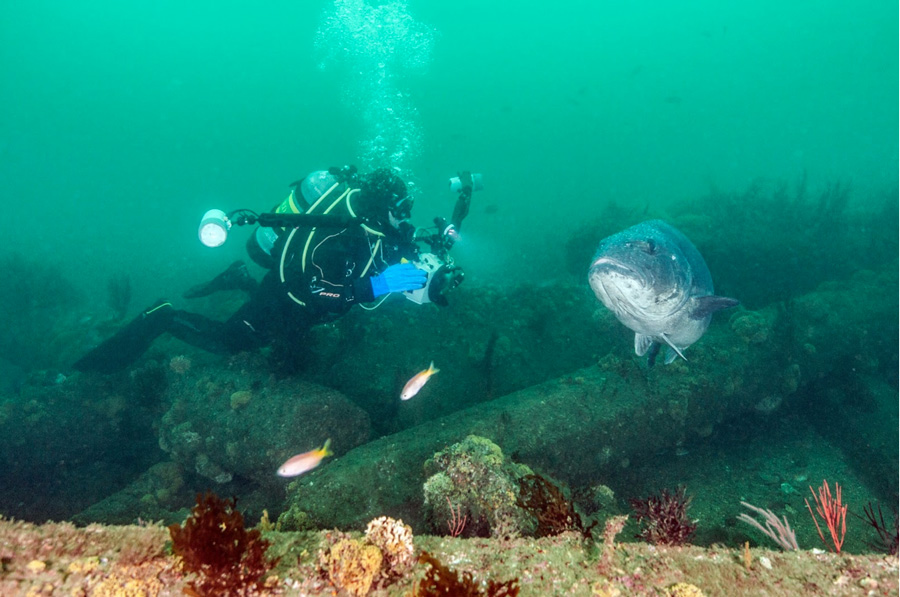
Community scientist Phil Garner photographing a giant sea bass. Photo by Merry Passage
So how does it work?
Once the photos and videos are uploaded to the project website (https://spottinggiantseabass.msi.ucsb.edu) with detailed information about the encounter (date, location, behavior, depth, etc.), researchers will then “spot map” the giant sea bass’s spot pattern. To do this, researchers manually mark each visible spot on the side of the fish and then run the algorithm, which is essentially a facial recognition software for giant sea bass. (Fun fact: this algorithm was originally developed by astrophysicists to identify patterns in star constellations and was later used by NASA with the Hubble telescope!) The algorithm provides a ranked selection of possible giant sea bass matches, and the research team decides if the spot pattern matches with a previously identified individual. If there is no match, the giant sea bass is marked as a new individual and the diver who submitted the image will be notified and given the opportunity to give the fish a nickname! This data helps researchers better understand how giant sea bass move throughout their natural range, how large the population is, and how effective marine protected areas are in helping preserve this magnificent species.
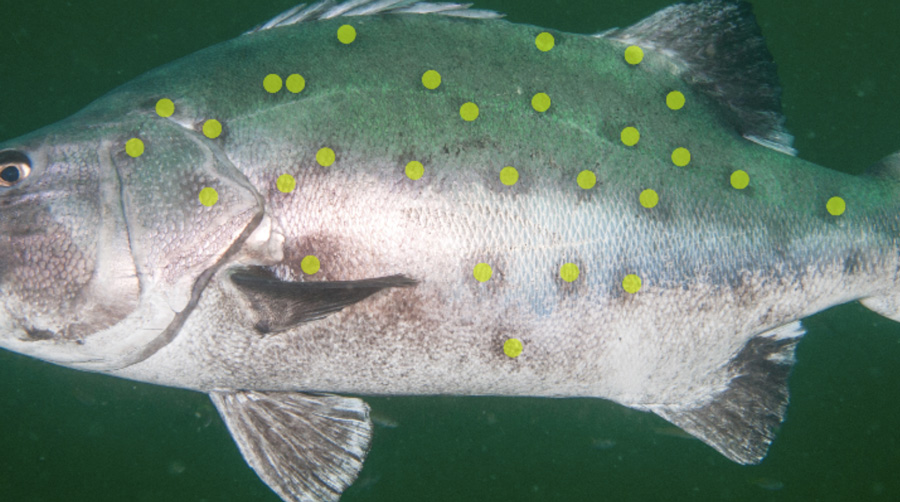
Identifying the spot pattern for the machine learning algorithm

A recent match of GSB310 seen at the same site over 2 years apart
For example, GSB187 has been observed 11 times in 6 different dive sites all over Anacapa and Santa Cruz Island! GSB187 was first spotted in June, 2015 at Cathedral Cove at Anacapa Island and was last seen in July, 2021 at Santa Cruz Island. Having data on where individual giant sea bass were encountered over the years is crucial in better understanding their life history and spatial patterns.

GSB187 at Cathedral Point, Anacapa Island in September, 2018. Photo by Douglas Klug
How to photograph the giant sea bass for submission
To effectively match a giant sea bass’s spots, the algorithm is a bit picky. The photograph must be at a right angle to either the left or right side of the giant sea bass. Additionally, the image should be clear with the unedited photo showing the majority of the spots and markings on the fish. The photo should be submitted in either jpeg or png format and videos may be submitted as mp4 files.
Pro tip: When you are lucky enough to encounter a giant sea bass, move in a very controlled and calm manner to not startle the gentle giant. Be patient and remain still to allow the curious fish to swim near you and check you out; this will also help with capturing a clear photograph of its spot pattern!

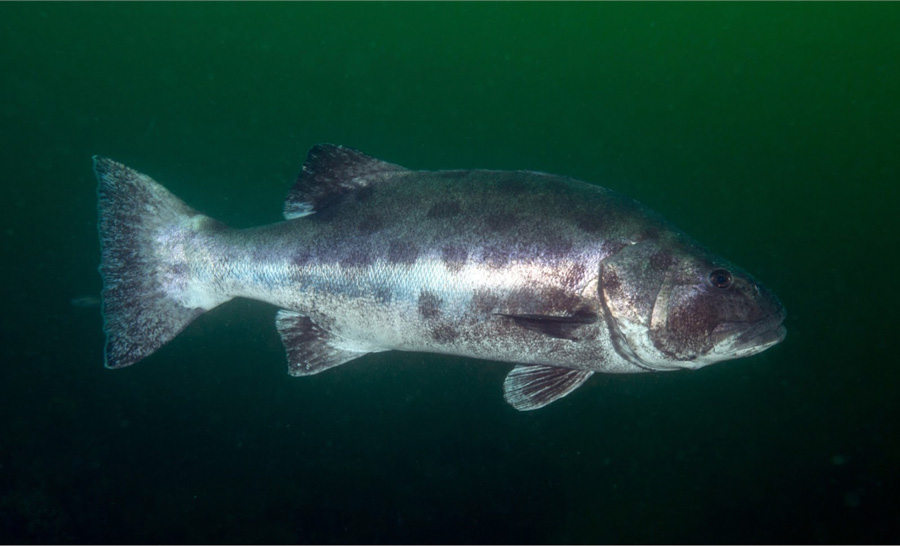
Examples of identifiable left and right side images. Photos by Merry Passage
Where can I find a giant sea bass?
Due to their rarity, it is very special and uncommon to encounter a giant sea bass. That being said, there are some places where giant sea bass are seen quite frequently. Some very well known dive sites are Avalon Dive Park on Catalina Island, all around Anacapa Island, and La Jolla in San Diego. However, there are verified encounters with giant sea bass all along the coast from San Francisco to Baja California in kelp forests, rocky reefs, and artificial reefs, such as shipwrecks. So, always be on the lookout for giant sea bass and bring your cameras!
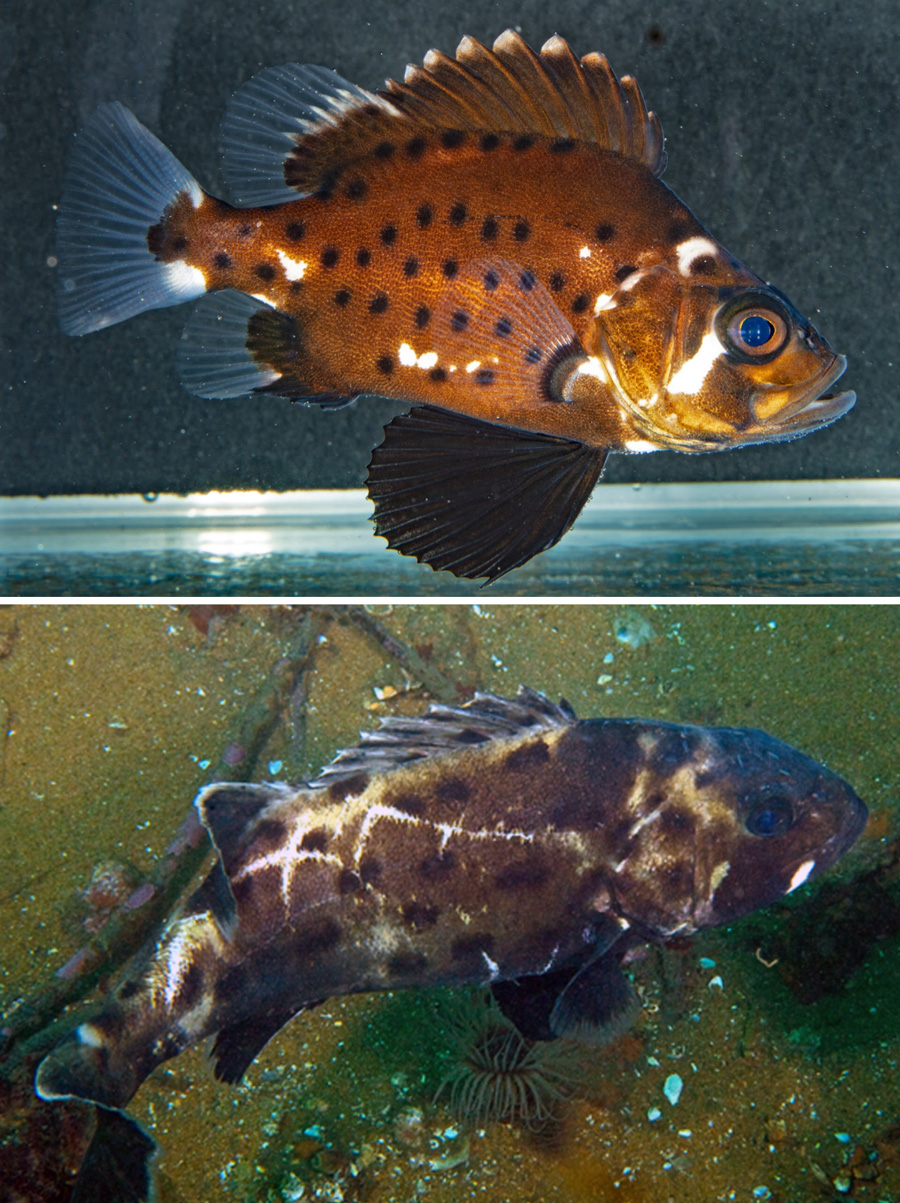
Giant sea bass at a few months old (above) and a giant sea bass at around 2 years old (Photos by Mike Couffer and Merry Passage)
If you are with a giant sea bass for long enough you might pick up on its behavior. As a large carnivore, they are always on the hunt and will swim around the reef foraging during the day. Some special behaviors to look out for are vocalizing by making a noise called a “sonic boom,” courting, and cleaning. Courting is where a male and female swim together in a circle while the male’s snout is nudging the female’s abdomen telling the female the male wants to mate. Cleaning is where the giant sea bass hovers in an area while small fish, such as the señorita fish, eat the parasites along the giant sea bass’ body, a really entertaining behavior to watch! If you observe these behaviors, do not forget to log it when you upload your encounter.
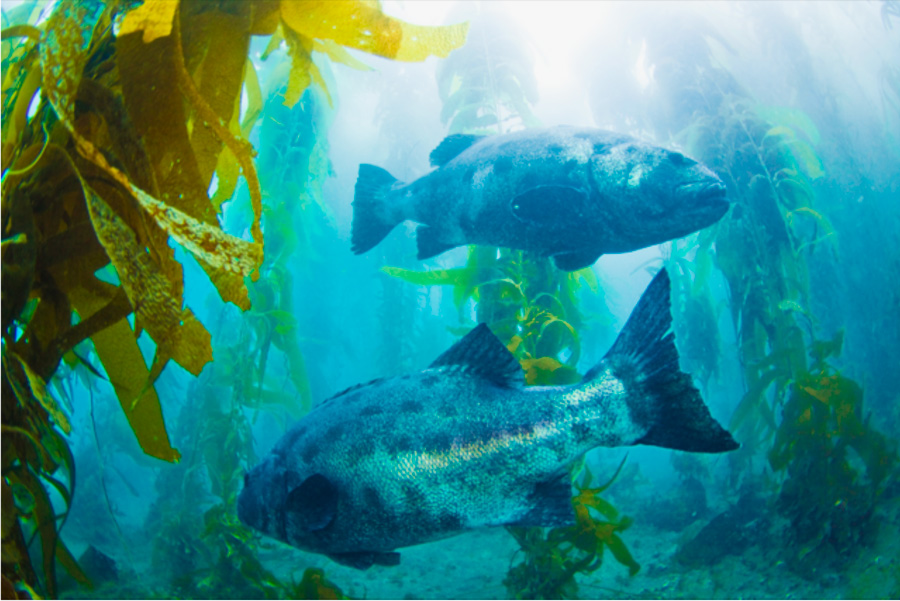
Photo by Dan Harding
More fun facts about giant sea bass
- There has never been a confirmed sighting of a spawning event, as they spawn at night at unknown locations
- They are actually not in the sea bass family (Serranidae) but in the wreckfish family (Polyprionidae); the closest known relative is the striped jewfish (Stereolepis doedereini) which are found in the northwestern Pacific Ocean from Russia to Korea
- Large females can produce up to 60 million eggs during a spawning season
- The largest giant sea bass ever caught was back in 1968 off of Anacapa island at 563 pounds by a sport fisherman
- There is evidence that the giant sea bass is capable of growing over 800 pounds and up to 100 years old
- Giant sea bass become sexually mature at 10 – 14 years old
- Their diet consists of many fish and crustaceans such as stingrays, lobster, squid, sardines, croaker, flatfishes, and small sharks
Have fun out there and if you end up photographing an encounter with a giant sea bass, don’t forget to submit it to https://spottinggiantseabass.msi.ucsb.edu! Happy Diving!
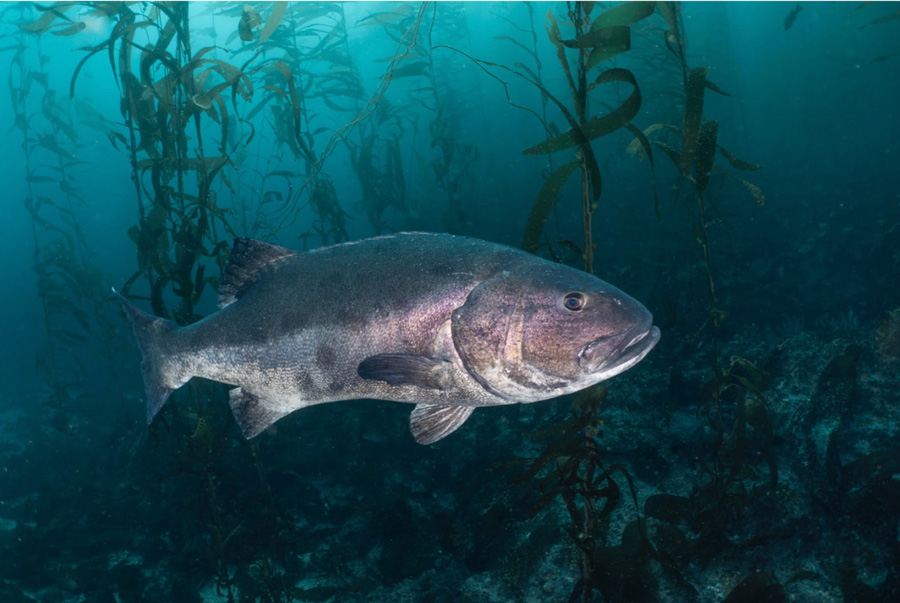
Photo by Debbie Karimoto
The Spotting Giant Sea Bass team is a collection of researchers from UC Santa Barbara, and is funded by the Benioff Ocean Science Laboratory. For any questions regarding the project or giant sea bass email us at spottinggiantseabass@gmail.com
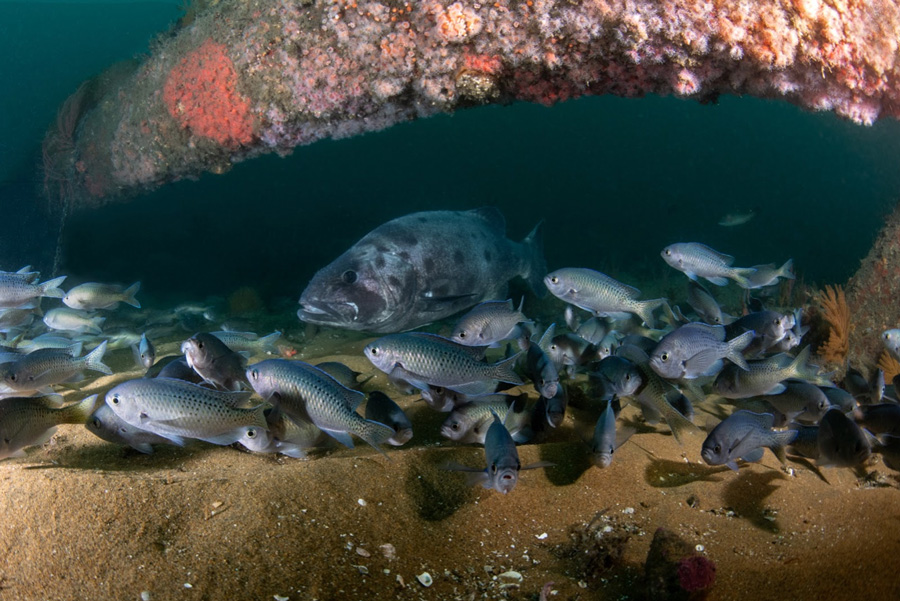
A giant sea bass with a school of blacksmith. Photo by Merry Passage.
Written by Andrew Pettit
